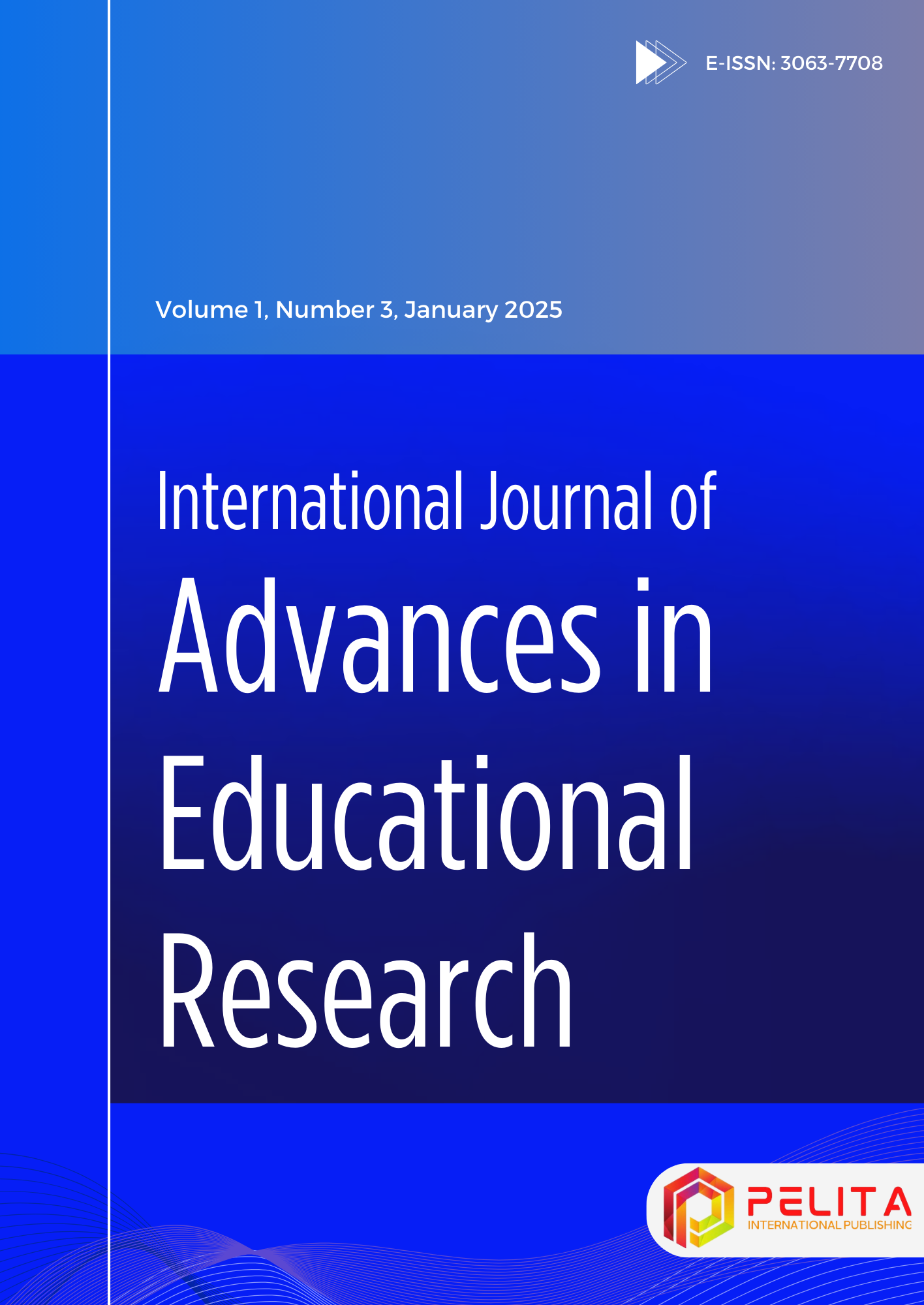
English young learners’ HOTs barriers in learning online with digital storytelling
DOI:
10.62941/ijaer.v1i3.111Downloads
Abstract
Currently, the advancement of technology in education has accelerated, particularly in teaching methodologies. Online or blended teaching has gained popularity in Indonesia. However, barriers persist in teaching English to young learners online, particularly in promoting Higher Order Thinking Skills (HOTs) through digital storytelling. Consequently, this research aims to investigate the barriers faced by English Young Learners (EYL) in acquiring HOTs through online learning with digital storytelling. This qualitative research design employed with case study design in online classroom observation and interviews as research instruments. The analysis revealed that EYL learners encounter difficulties with teaching instruments, technology issues, their English proficiency, and the implementation process. Therefore, it is advisable for future researchers to prioritize and address these barriers.
Keywords:
EYL HOTs barries Online teaching Digital storytellingReferences
Al-Yahyaie, R., Muhamad, M. M., & Alkharusi, H. A. (2022). Barriers to teaching higher order thinking skills to EFL school learners: A systematic review. International Journal of Academic Research in Progressive Education and Development, 11(2), 784-801. https://10.0.23.119/IJARPED/v11-i2/1331 DOI: https://doi.org/10.6007/IJARPED/v11-i2/13311
Alrawili, K. S., Osman, K., & Almuntasheri, S. (2020). Effect of Scaffolding Strategies on Higher-Order Thinking Skills in Science Classroom. Journal of Baltic Science Education, 19(5), 718-729. DOI: https://doi.org/10.33225/jbse/20.19.718
Anderson, L. W., & Krathwohl, D. R. (2001). A taxonomy for learning, teaching, and assessing: A revision of Bloom's taxonomy of educational objectives: complete edition. Addison Wesley Longman, Inc..
Bloom, B. S. (1956). Taxonomy of educational objectives: The classification of educational goals. Handbook I: Cognitive domain. David McKay.
Brookhart, S. M. (2010). How to assess higher-order thinking skills in your classroom. Ascd.
Buttimer, C. J., Colwell, R., Coleman, D., Faruqi, F., Larke, L., & Reich, J. (2022). What’s lost, what’s left, what’s next: Lessons learned from the lived experiences of teachers during the pandemic. Berkeley Review of Education, 11(2). https://doi.org/10.5070/B81125 1975 DOI: https://doi.org/10.5070/B811251975
Costa, A. L., & Kallick, B. (Eds.). (2008). Learning and leading with habits of mind: 16 essential characteristics for success. ASCD.
Dörnyei, Z. (2014). The psychology of the language learner: Individual differences in second language acquisition. Routledge. DOI: https://doi.org/10.4324/9781410613349
Hew, K. F., & Brush, T. (2007). Integrating technology into K-12 teaching and learning: Current knowledge gaps and recommendations for future research. Educational technology research and development, 55, 223-252. https://doi.org/10.1007/s11423-006-9022-5 DOI: https://doi.org/10.1007/s11423-006-9022-5
Hodges, C. B., Moore, S., Lockee, B. B., Trust, T., & Bond, M. A. (2020). The difference between emergency remote teaching and online learning. http://hdl.handle.net/10919/104648
Krashen, S. (1982). Principles and practice in second language acquisition. DOI: https://doi.org/10.1111/j.1467-971X.1982.tb00476.x
OECD. (2021). Teachers’ Perceptions of Online Learning Effectiveness: A Global Survey Report. OECD Publishing.
Pabriana, H., Setyarini, S., & Rodliyah, R. S. (2023, December). The implementation of digital storytelling to promote higher-order thinking skills (HOTs) of EFL young learners. In AIP Conference Proceedings (Vol. 2621, No. 1). AIP Publishing. https://doi.org/10.1063/ 5.0142315 DOI: https://doi.org/10.1063/5.0142315
Qiu, C., Shukor, S. S., Singh, C. K. S., Wang, G., Zhong, X., & Tian, Y. (2022). A systematic review on the effectiveness of blended learning on learners’ EFL vocabulary performance. Pegem Journal of Education and Instruction, 12(4), 204-219. https://doi.org/10.47750/pegegog.12.04.21 DOI: https://doi.org/10.47750/pegegog.12.04.21
Rahman, A., et al. (2021). The Challenges of Self-Regulated Learning in Young Learners During Online Education. Journal of Educational Technology & Society, 24(3), 45-58
Robin, B. R. (2008). Digital storytelling: A powerful technology tool for the 21st century classroom. Theory into practice, 47(3), 220-228. https://doi.org/10.1080/00405840802 153916 DOI: https://doi.org/10.1080/00405840802153916
Selwyn, N., Macgilchrist, F., & Williamson, B. (2020). Digital Education After the Covid-19. Verlag nicht ermittelbar.
UNESCO. (2021). Education in a Post-Pandemic World: Nine Ideas for Public Action. UNESCO Publishing
Vygotsky, L. S. (1978). Mind in society: The development of higher psychological processes. Harvard University Press
Wahyuningrum, T., & Sa’diya, L. K. (2022). Impact of Learning From Home: Cognitive Development of Early Childhood Education Student in Pandemic Covid–19 (Doctoral dissertation, Jurnal Obsesi: Jurnal Pendidikan Anak Usia Dini). https://10.31004/ obsesi.v6i5.2825 DOI: https://doi.org/10.31004/obsesi.v6i5.2825
Yang, Y. T. C., & Wu, W. C. I. (2012). Digital storytelling for enhancing student academic achievement, critical thinking, and learning motivation: A year-long experimental study. Computers & education, 59(2), 339-352. https://doi.org/10.1016/j.compedu. 2011.12.012 DOI: https://doi.org/10.1016/j.compedu.2011.12.012
Zohar, A., & Dori, Y. J. (2003). Higher order thinking skills and low-achieving students: Are they mutually exclusive?. The journal of the learning sciences, 12(2), 145-181. https:// doi.org/10.1207/S15327809JLS1202_1 DOI: https://doi.org/10.1207/S15327809JLS1202_1
License
Copyright (c) 2025 Handi Pabriana, Anisa Septia Megawati, Jeni

This work is licensed under a Creative Commons Attribution 4.0 International License.








